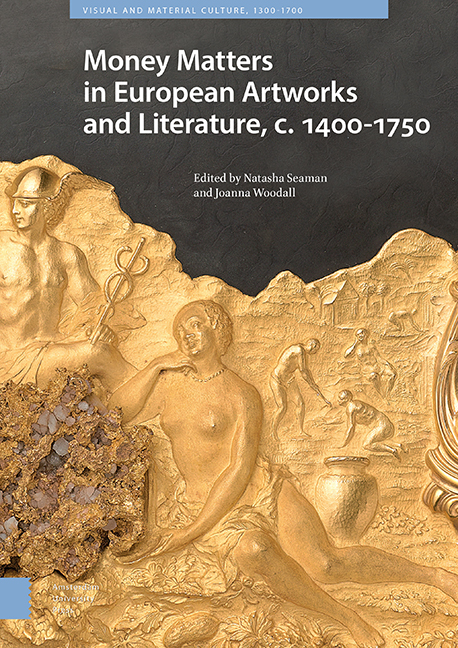Introduction: Embodying Value
Published online by Cambridge University Press: 15 September 2022
Summary
This book explores ways in which the potent and elusive concept of money was embodied and visualised in Western European culture between 1400 and 1750. At a moment when we increasingly use plastic cards or bank transfers to pay for goods and services and digital currency is gaining ground, the book concentrates on precious coins as artefacts and agents within works of art and literature. Topics range from Masaccio's Tribute Money in early fifteenth-century Florence, to a satirical poem in Stuart London, to a gold and tortoiseshell box presented to Prince Wilhelm IV of Orange by the Dutch West India Company in 1749. Coins’ double-sided form, emblematic character and the precious materials from which they were made had deep resonance in European culture and cultural encounters. The efficacy of coins depended on faith in their intrinsic value and on the authority impressed into them, putatively guaranteed through the institution of the Mint. At the same time, coins also spoke of illusion, debasement, and counterfeiting. By exploring the signifying potential of precious coins in artefacts and different kinds of literature, this book considers parallels and intersections between early modern concepts of money and the ways in which meaning was produced by works of art.
“Money, which we hope to see and hold every day, is diabolically hard to comprehend in words,” writes James Buchan in Frozen Desire (2001), his highly regarded exploration of views of money across time and place. Money, as distinct from coins or notes or other tokens, is not in itself a material object but rather a medium of exchange, a means of enabling goods to circulate more easily and quickly. A monetary system overcomes the stoppages in a barter system caused by one party to an exchange not having anything to offer that is agreed or judged to be of equal value to the thing offered by the other party. For example, the catch of fish offered by Amir may not be deemed to be worth as much as the sack of corn offered by Bashaam, not because of any intrinsic or absolute difference in their value but rather due to a whole variety of factors such as Bashaam's taste for fish,desire to have that amount of a perishable commodity all at once, the amount of fish available elsewhere and even her willingness to spend her time bartering. A monetary system circumvents some of these issues through the device of price.
- Type
- Chapter
- Information
- Publisher: Amsterdam University PressPrint publication year: 2022



